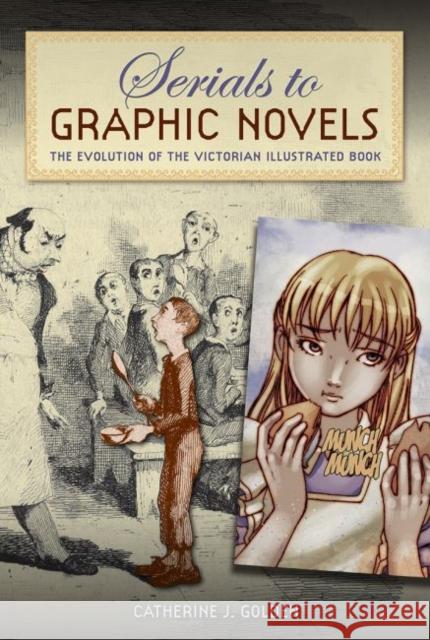Serials to Graphic Novels: The Evolution of the Victorian Illustrated Book » książka
Serials to Graphic Novels: The Evolution of the Victorian Illustrated Book
ISBN-13: 9780813062297 / Angielski / Twarda / 2017 / 320 str.
Serials to Graphic Novels: The Evolution of the Victorian Illustrated Book
ISBN-13: 9780813062297 / Angielski / Twarda / 2017 / 320 str.
(netto: 329,83 VAT: 5%)
Najniższa cena z 30 dni: 342,78
ok. 30 dni roboczych.
Darmowa dostawa!
A valuable and comprehensive survey of an enormous subject. Extremely well written and a significant addition to scholarship. --Paul Goldman, coeditor of Reading Victorian Illustration, 1855 1875: Spoils of the Lumber Room
A marvelous overview of how and why illustrations became an integral part of Victorian fiction. Golden documents a remarkable continuity from early nineteenth-century caricatures to realistic portrait-based illustrations to current graphic rewritings of familiar classics. --Martha Vicinus, author of Intimate Friends: Women Who Loved Women, 1778-1928
A capacious and synthetic work that draws on a wide variety of scholarship, a very impressive command of the history of book illustration, a huge array of visual and verbal texts, and (most important) a commitment to the genre as a genre in the history of literary and artistic form. Peter Betjemann, author of Talking Shop: The Language of Craft in an Age of Consumption
The Victorian illustrated book came into being, flourished, and evolved during the long nineteenth century. While existing scholarship on Victorian illustrators largely centers on the realist artists of the Sixties, this volume examines the entire lifetime of the Victorian illustrated book. Catherine Golden offers a new framework for viewing the arc of this vibrant genre, arguing that it arose from and continually built on the creative vision of the caricature-style illustrators of the 1830s. She surveys the fluidity of illustration styles across serial installments, British and American periodicals, adult and children s literature, and--more recently--graphic novels.
Serials to Graphic Novels examines widely recognized illustrated texts, such as The Pickwick Papers, Oliver Twist, Alice in Wonderland, Peter Rabbit, and Trilby. Golden explores factors that contributed to the early popularity of the illustrated book the growth of commodity culture, a rise in literacy, new printing technologies and that ultimately created a mass market for illustrated fiction.
Golden identifies present-day visual adaptations of the works of Austen, Dickens, and Trollope as well as original Neo-Victorian graphic novels like The League of Extraordinary Gentlemen and Victorian-themed novels like Batman: Noel as the heirs to the Victorian illustrated book. With these adaptations and additions, the Victorian canon has been refashioned and repurposed visually for new generations of readers.
"











